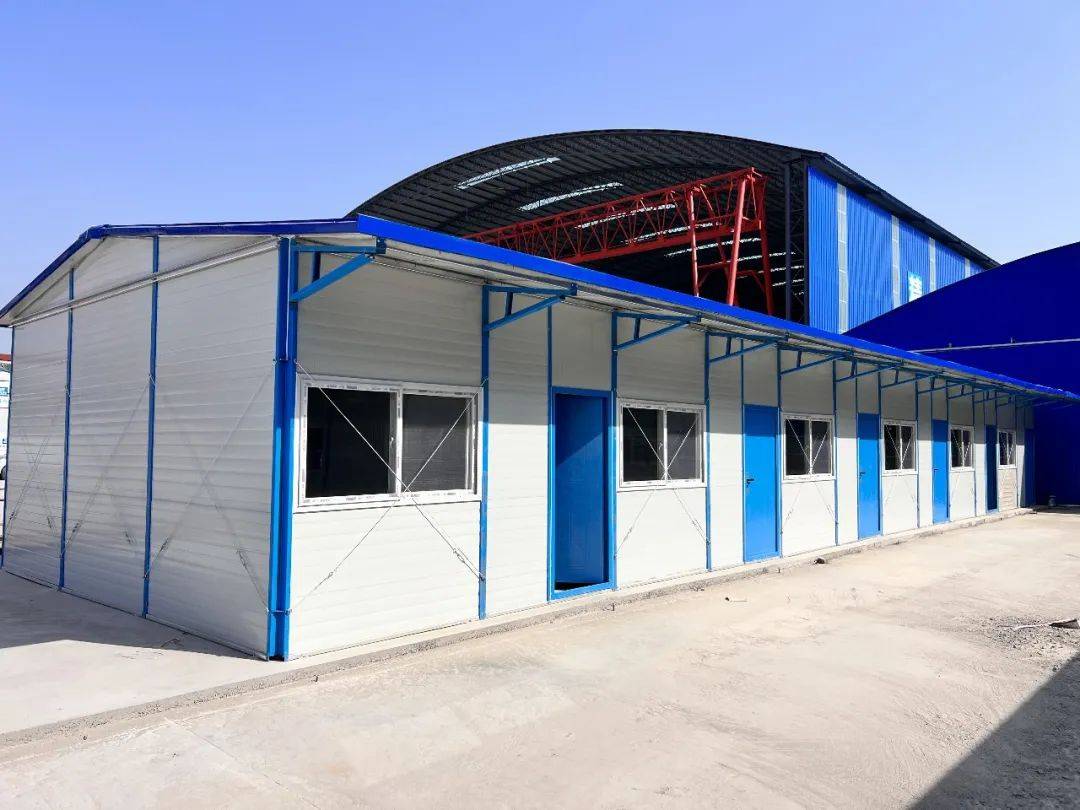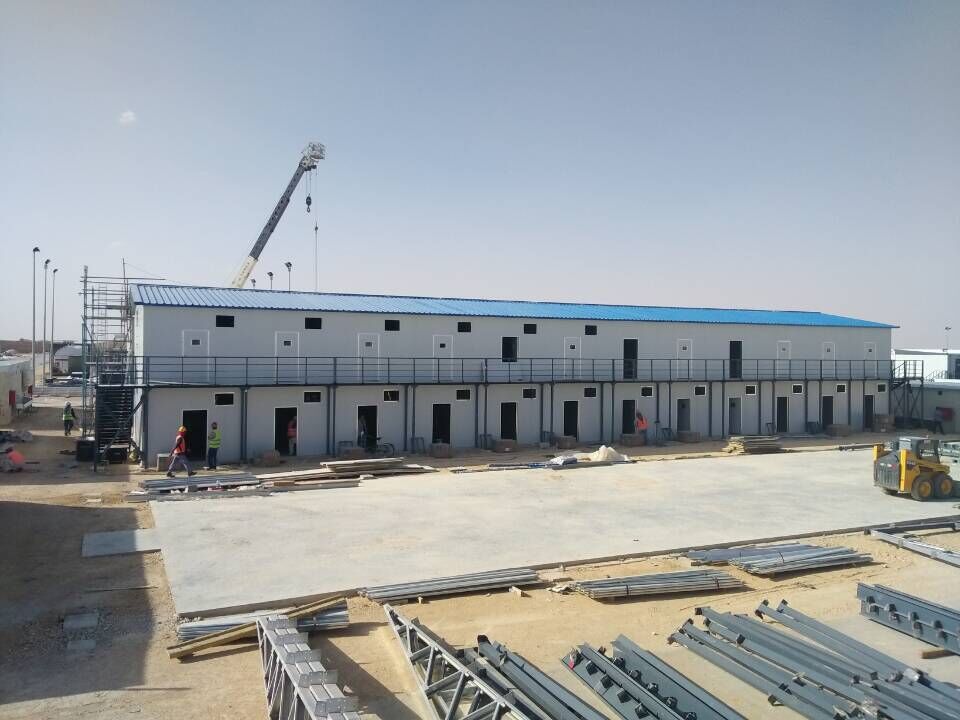Tel: 0086-532-88966982
0086-532-88965892
Website: www.lidajituan.com
E-mail: sales@lidajituan.com
Head office: 5th Floor, Building A, Darron Center, 180 Haier Road, Qingdao, 266000, China
The 2025 Guide to Prefab Houses: Why Modular Homes Are Revolutionizing Global Housing
Classification:Industry News
Release time:2025-06-04 14:24
The 2025 Guide to Prefab Houses: Why Modular Homes Are Revolutionizing Global Housing
The winds of change are sweeping through the global housing landscape, and at the epicenter stands prefabricated construction. Gone are the days when prefab house or modular house conjured images of flimsy, temporary structures. By 2025, the industry has matured dramatically, driven by technological leaps, sustainability demands, and critical global needs. This guide delves into why prefab homes are no longer just an alternative, but the vanguard of a housing revolution.
From Factory Floor to Forever Home: The Prefab Renaissance
At its core, a prefab house, also known as a prefabricated house or modular house, is built in sections within a controlled factory environment. These sections, or modules, are then transported to the building site for final assembly. This method contrasts sharply with traditional "stick-built" construction.
The 2025 advantage? Precision, efficiency, and quality control are paramount. Cutting-edge robotics, advanced BIM (Building Information Modeling), and sophisticated material science ensure that modules are crafted with tolerances far tighter than what weather-exposed sites can achieve. The result is a prefab home that is structurally superior, energy-efficient from day one, and significantly reduces on-site waste – tackling sustainability head-on.

The 2025 Drivers: Why Prefab is Exploding Globally
Several converging factors make 2025 a pivotal year for modular houses:
- The Global Housing Crisis: With rapid urbanization, population growth, and supply chain disruptions lingering from previous years, affordable and rapid housing solutions are more critical than ever. Prefab houses offer a lifeline, capable of slashing project timelines by 30-50% compared to conventional builds, delivering homes faster to those who need them.
- Sustainability Imperative: Climate change pressures and stringent carbon regulations demand greener building practices. Factory-controlled construction drastically minimizes material waste and optimizes resource usage. Furthermore, the inherent efficiency of prefab homes, designed for superior insulation and reduced energy consumption throughout their lifecycle, aligns perfectly with global net-zero goals.
- Technological Maturity: AI-driven design optimization, IoT sensors integrated during manufacturing for smart homes, and sophisticated logistics software have overcome many past logistical hurdles associated with large module transport. The prefab house in 2025 is a technologically advanced product.
- Labor Shortages: Skilled labor shortages continue to plague traditional constructions. Prefab shifts much of the labor into the factory, where processes can be standardized, training focused, and productivity significantly higher, mitigating site labor dependencies.
- Rising Material Costs & Supply Chain Resilience: While not immune to volatility, factory environments allow for bulk purchasing, reduced theft and damage, and more efficient material utilization, providing some insulation against cost escalations. Strategic sourcing partners, especially from major manufacturing hubs, enhance resilience.

Beyond Residential: Prefab Powers Critical Industries
While transforming housing, prefabricated construction is a game-changer for demanding commercial and industrial sectors:
- Mining: Remote mining operations require robust, rapidly deployable accommodation and operational facilities (offices, clinics, mess halls). Prefab houses and complex modular camps offer speed, durability in harsh environments, and the flexibility to relocate or expand as the mine evolves. High-quality prefab homes ensure a safe and comfortable base for workers.
- Oil & Gas: Similarly, oil & gas exploration and production often occur in isolated or environmentally sensitive areas. Modular construction minimizes on-site disturbance and delivers essential infrastructure – worker housing, control rooms, processing modules, and laboratories – quickly and reliably. Corrosion-resistant materials and robust designs are essential here.
- Constructions: The industry itself relies heavily on prefab. From complex hospital wings and school buildings assembled over weekends to large-scale office complexes and apartment blocks, modular house principles are scaling up commercial constructions, reducing project risk and community disruption significantly.
China's Prefab Powerhouse: Innovation and Scale at Play
China's role as a global leader in prefabricated house manufacturing cannot be overstated. Chinese suppliers offer compelling advantages:
- Unmatched Scale: Vast factory networks enable high-volume production at competitive costs.
- Integrated Supply Chains: Efficient access to raw materials like steel, insulation, and advanced cladding materials.
- Advanced Engineering: Continuous investment in automation, manufacturing technology, and seismic/thermal R&D.
- Experience & Export Focus: Decades of experience catering to diverse global needs and building standards.
Lida Group: A Legacy of Quality in Prefab Structures
As a prominent example of China's industrial capability, Lida Group stands out as a trusted China supplier in the prefabricated building space. Established in 1993, Lida Group has accumulated over three decades of expertise designing, engineering, and manufacturing high-performance off-site buildings.
Lida Group's core product lines include:
- Container Houses: Versatile, secure, and rapidly deployable for accommodation, offices, retail, and more. Ideal for temporary or permanent needs.
- Prefab Houses: Wide-ranging solutions encompassing residential homes, villas, multi-story apartment blocks, commercial complexes, and specialized institutional buildings.
- Steel Structure Buildings: Robust solutions for large-span warehouses, factories, workshops, aircraft hangars, and sports facilities, often incorporating significant prefabricated elements.
Lida Group's commitment to innovation, stringent quality control processes (ISO-certified), and global project experience make them a reliable partner for mining camps, oil & gas infrastructure, complex constructions projects, and, of course, cutting-edge prefab homes. Their understanding of international standards and customer service focus positions them as a leading China supplier for global prefab house needs in 2025 and beyond.
The 2025 Prefab Home Experience
What does choosing a prefab home mean in 2025?
- Customization is King: Forget cookie-cutter designs. Modern prefab houses offer immense flexibility. Advanced software allows for extensive design customization – floor plans, elevations, material finishes, smart home integrations – matching or exceeding traditional builds.
- Speed to Shelter: From site preparation to handing over keys, the timeline is drastically compressed. While site work and foundation preparation happen, the modules are built concurrently in the factory. Assembly on-site often takes just days or weeks.
- Quality & Performance: Factory precision ensures airtight construction, leading to unparalleled energy efficiency (lower utility bills) and superior indoor air quality. Building codes for modular houses are as strict, if not stricter in some aspects, as site-built structures.
- Longevity & Resilience: Using high-quality materials like engineered lumber, structural insulated panels (SIPs), or light gauge steel frames, prefab homes are built to last generations, designed to withstand local climate conditions and meet rigorous building standards worldwide.
- Cost Certainty: While not always the absolute cheapest upfront (premium finishes and design complexity influence cost), the controlled factory process and reduced on-site labor time offer greater predictability against budget overruns common in traditional constructions. Lifecycle costs are often lower due to energy efficiency.
Addressing the Challenges (and the 2025 Solutions)
No solution is without hurdles, but 2025 sees significant mitigation:
- Perception: Lingering misconceptions about quality and design are fading rapidly as high-end, architecturally stunning prefab houses gain visibility and win prestigious awards. Lida Group and other forward-thinking suppliers showcase diverse portfolios.
- Financing: Lenders have evolved. Financing options for prefab homes are increasingly equivalent to traditional mortgages, recognizing the proven value and durability of modern modular builds.
- Transportation Logistics: Planning large module transport remains crucial. However, sophisticated route planning, optimized module sizing, and specialized transport companies have made even remote sites accessible. Suppliers like Lida Group have extensive global shipping experience.
- Site Constraints: Access and foundation requirements still need careful planning. Early collaboration between supplier, designer, and site contractor is key. This integrated approach is now standard practice.

The Future is Modular: Beyond 2025
The trajectory is clear. Prefabricated construction is moving beyond efficiency towards radical innovation:
- Mass Timber Integration: Combining modular methods with sustainable mass timber (CLT, Glulam) creates stunning, carbon-sequestering structures.
- Digital Twins & AI: Real-time digital replicas of buildings for ongoing maintenance, optimization, and future retrofits will become commonplace. AI will optimize designs for performance and manufacturability.
- Circular Economy Models: Designing prefab houses for disassembly and reuse of modules/components will minimize lifecycle waste.
- Vertical Integration: Expect larger players like Lida Group and others to strengthen end-to-end services, encompassing design, manufacturing, logistics, and on-site assembly management.
- Off-Planet Construction: The principles of prefab are fundamental to developing habitats on the Moon and Mars.
Conclusion: Embracing the Prefab Revolution in 2025
The prefab house has graduated. No longer just a practical necessity, it's a sophisticated, desirable, and sustainable solution at the heart of the global housing revolution. In 2025, choosing a prefab home means opting for speed without sacrificing quality, embracing sustainability without compromising comfort, and accessing cutting-edge design while gaining cost predictability. From addressing urgent housing shortages and empowering critical industries like mining and oil & gas, to setting new standards in commercial constructions, modular houses are fundamentally reshaping how we build and live.
Leading China suppliers like Lida Group, with their deep experience since 1993 in container houses, prefab houses, and steel structure buildings, exemplify the global capacity and expertise driving this transformation. As technology advances, sustainability becomes non-negotiable, and global needs intensify, the prefabricated house isn't just the future; it's the imperative present of 2025. Building smarter, faster, and greener has arrived, and it's modular.
prefab house,modular house,constructions,mining
Contact Us
Head Office: 5th Floor,Building A,Darron Center,No.180,Haier Road,Qingdao, 266000,China
Tel: 0086-532-88966982 88965892 Fax:0086-532-88965571
WhatsApp:+86 13793209022
Mobile/Wechat:+86-15166671720
Email: sales@lidajituan.com Website: www.lidajituan.com
Alternate Website: www.lidamodularhouse.com
Head Office: 5th Floor,Building A,Darron Center,No.180,Haier
Road,Qingdao, 266000,China
Tel: 0086-532-88966982 88965892
Fax:0086-532-88965571
Email: sales@lidajituan.com
Website: www.lidajituan.com
Alternate Websit: www.prefabhousecn.com
Wechat/WhatsApp:+86-13793209022
Copyright(c)2023 All Rights Reserved SEO Business license

